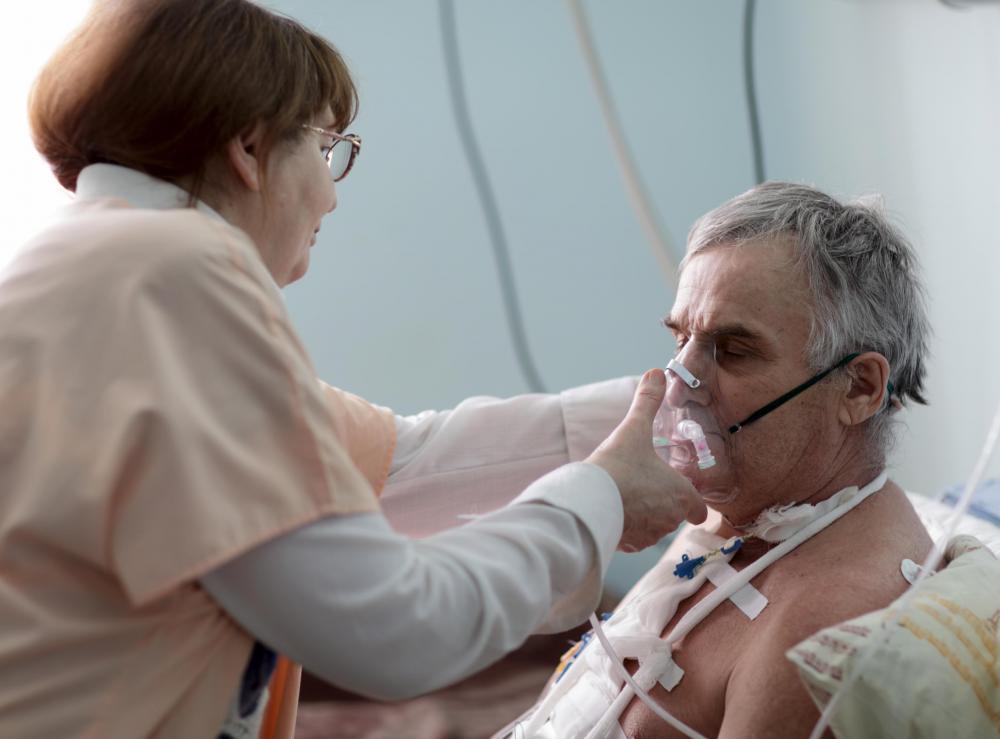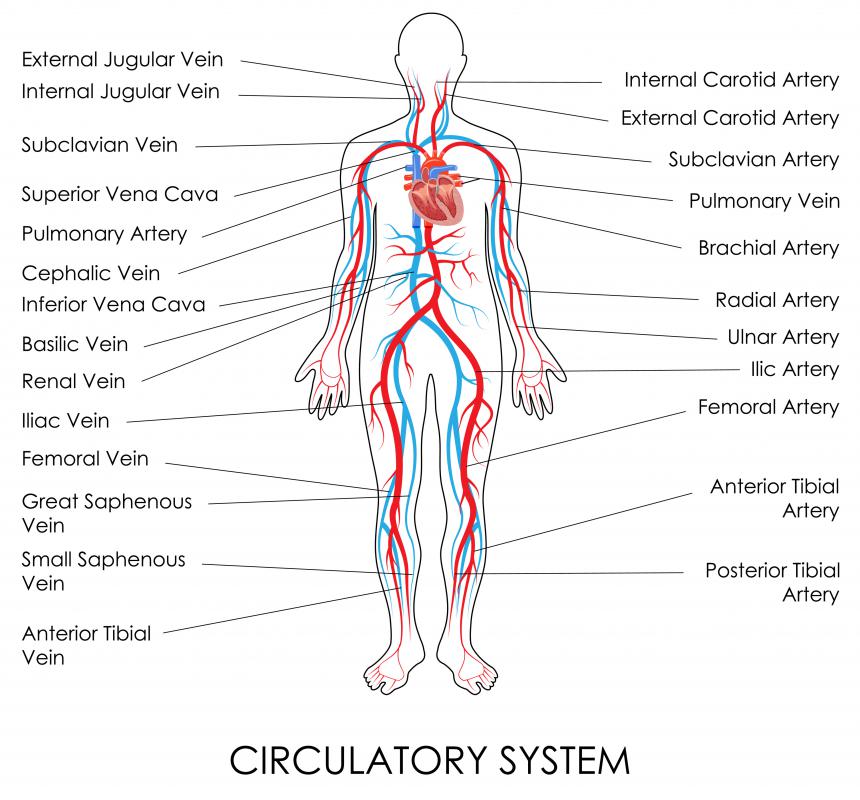At TheHealthBoard, we're committed to delivering accurate, trustworthy information. Our expert-authored content is rigorously fact-checked and sourced from credible authorities. Discover how we uphold the highest standards in providing you with reliable knowledge.
What is the Internal Mammary Artery?
The internal mammary artery is an artery found along the inside of the anterior chest wall. It has a number of branches designed to supply the breasts and the chest wall and when it reaches the bottom of the chest, it splits into the musculophrenic and superior epigastric arteries. Clinically, the internal mammary artery is of special interest in coronary artery bypass procedures, where it may be harvested and used as a graft.
Like other arteries in the body's circulatory system, with the exception of the pulmonary artery, the internal mammary artery carries a supply of freshly oxygenated blood from the heart. It arises from the subclavian artery. Two internal mammary arteries are present, one on either side of the sternum. Each splits to supply the intracostal spaces and other parts of the chest wall, along with the breasts. Venous return occurs along the corresponding internal mammary vein, a vein carrying deoxygenated blood back to the heart and lungs.

One interesting characteristic of the internal mammary artery is that it is known to resist plaques of cholesterol and other materials. In patients with atherosclerosis, this artery can be in relatively good condition. This can be critically important when a venous graft is needed, as other blood vessels may be more fragile and less acceptable for grafting. For coronary artery bypass procedures, this artery is ideally suited for grafting because it is easy to access and is usually in good condition.

Also known as the internal thoracic artery, this artery is relatively small when compared to other vessels commonly used in grafting. Surgeons must consider this when evaluating a patient to decide on the best vessel to use for a graft. The surgeon may also consider the patient's medical history and other issues when deciding on the best way to perform a grafting procedure, and the patient can also be consulted and provided with information about the procedure in order to play a role in the decisions made by the surgeon.

If the internal mammary artery is used for a graft, it usually revascularizes quickly and can perform very well as part of a bypass graft. If the graft fails, a surgeon will need to take a graft from another area of the body and other treatment options may be considered as well. Failure of a graft can occur for a variety of reasons and is not necessarily the fault of the surgeon or the patient.
AS FEATURED ON:
AS FEATURED ON:
















Discuss this Article
Post your comments